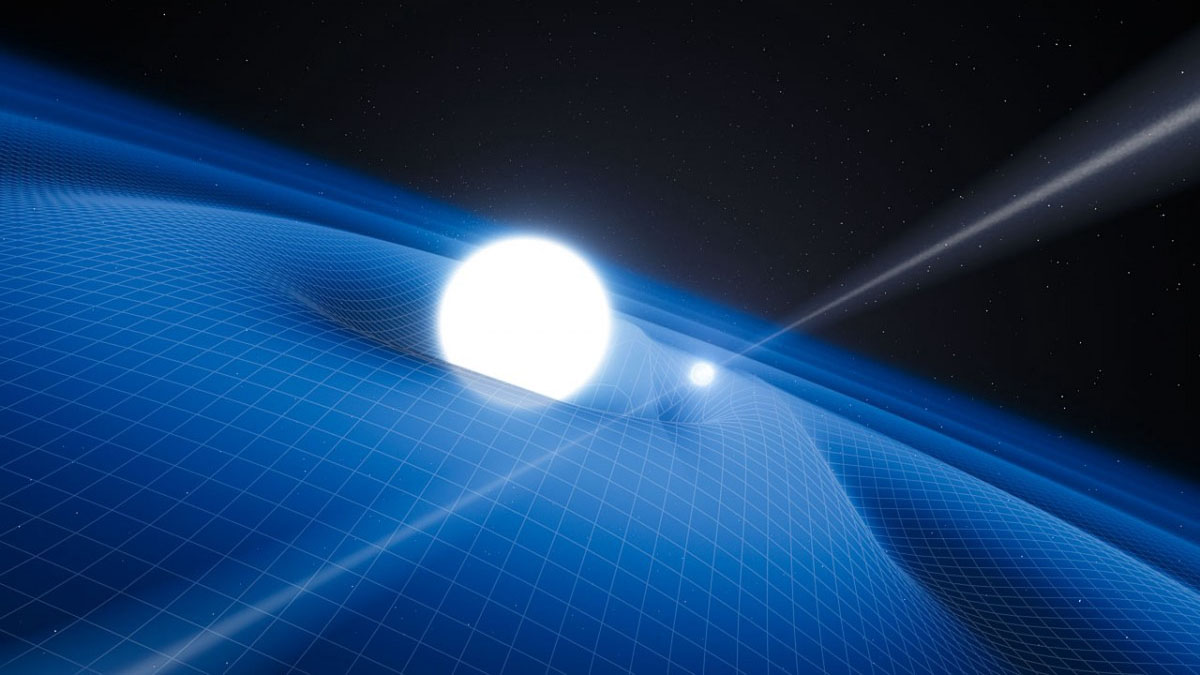how to navigate in deep space with dead stars

Not only are GPS devices useful, they’re also an ongoing experiment that keeps confirming special relativity’s spot on descriptions of how time flows for fast-moving objects. Without constant adjustments, GPS would be quickly rendered unusable because accurate timing of the signals being sent between the satellites and the moving object they’re supposed to track is so crucial. If the satellites’ internal timers keep skipping ahead of our hyper-precise atomic clocks, errors in distance estimations would mount hour by hour and the only thing that GPS systems would be good for is telling the location of a perfectly stationary objects like a building. And even that data would be very inexact at best. This means that a spacecraft traveling deep into the solar system or beyond won’t be able to use GPS to accurately track its trajectory, relying on stars and input from its human handlers instead. But in really deep space, it will need a better positioning system, one that needs minimum intervention from either us or computers, and a team of Italian physicists think they have an idea for one.
Instead of using relative positions of satellites to our planet or a spacecraft, they propose observing pulsars, rapidly spinning neutron stars emitting beams of radiation. When the beams reach an observer, they show up as regular, high frequency pings. In fact, the first astronomers to discover pulsars wondered if they picked up a signal from some alien civilization, that’s how regular and reliable these neutron stars’ pulses are. And we measure them already accounting for the effects of relativity on our radio antennae, so when we observe four or more pulses from different points in the sky, we can infer our approximate position in space-time. Enter the aforementioned team of Italian physicists. Using pulsars, they’re effectively building a four-dimensional grid in which pulsars are used to establish the object’s location as a set of explicit coordinates. There are of course some corrections that have to be made when this grid is overplayed on the data from real-world objects. The mass of the Sun distorts how electromagnetic signals from pulsars reach us. The pulsars themselves move in the sky at a very small but noticeable rate, which means that the grid’s coordinates have to be adjusted every few months or the entire pulsar positioning system (which I’m calling PPS) would suffer the same fate as an out of sync GPS, albeit much slower due to the distances involved.
Nevertheless, the PPS seems to work well enough in computer simulations to track objects with an accuracy of about 100 meters, which the team argues could be improved tenfold by looking only for X-ray pulsars. This is about as well as a standard GPS does with heavy interference, and about ten times worse than it can do in most scenarios. But considering that the signals being tracked are coming from light years away, this is very impressive. Trouble is that a spacecraft using a PPS would have to be loaded with a lot of gear it might not be able to carry for practical reasons. Likewise, this is meant to work for spacecraft which travel at non-relativistic speeds, so a future spacecraft design suited for deep space exploration might have trouble using it. When moving at a fair percentage of the speed of light, a lot of adjustments would be needed to accurately track any source of electromagnetic radiation. In the grand scheme of things though, the differences may be negligible because the pulsars are so far away and move so slowly relative to a speeding spaceship. The estimations could be just enough to get it into orbit around its destination and when it slows down, it could use the stars, or other guidance systems to refine its trajectory. The only point of concern is that inaccuracies over the vast distances in space tend to add up and a chronic uncertainty of 20, or 30, or 50 meters could result in a multi- million mile drift over trillions of miles if proper corrections and adjustments aren’t made along the way.
See: Tartaglia A., Ruggiero M., and Capolongo E., (2010). A null frame for spacetime positioning by means of pulsating sources Advances in Space Research arXiv: 1001.1068v3





